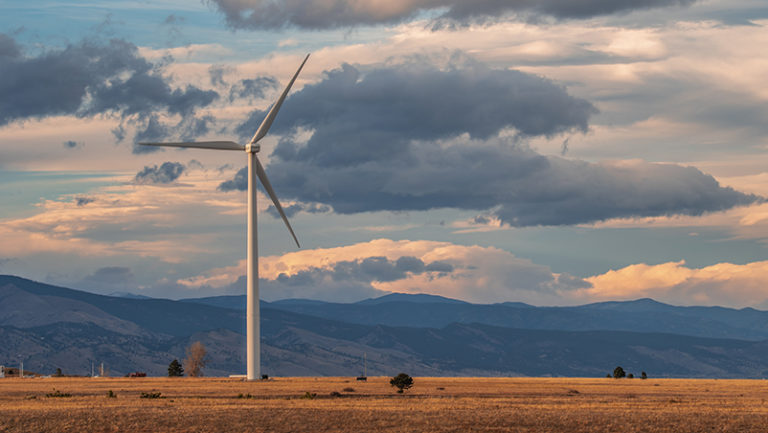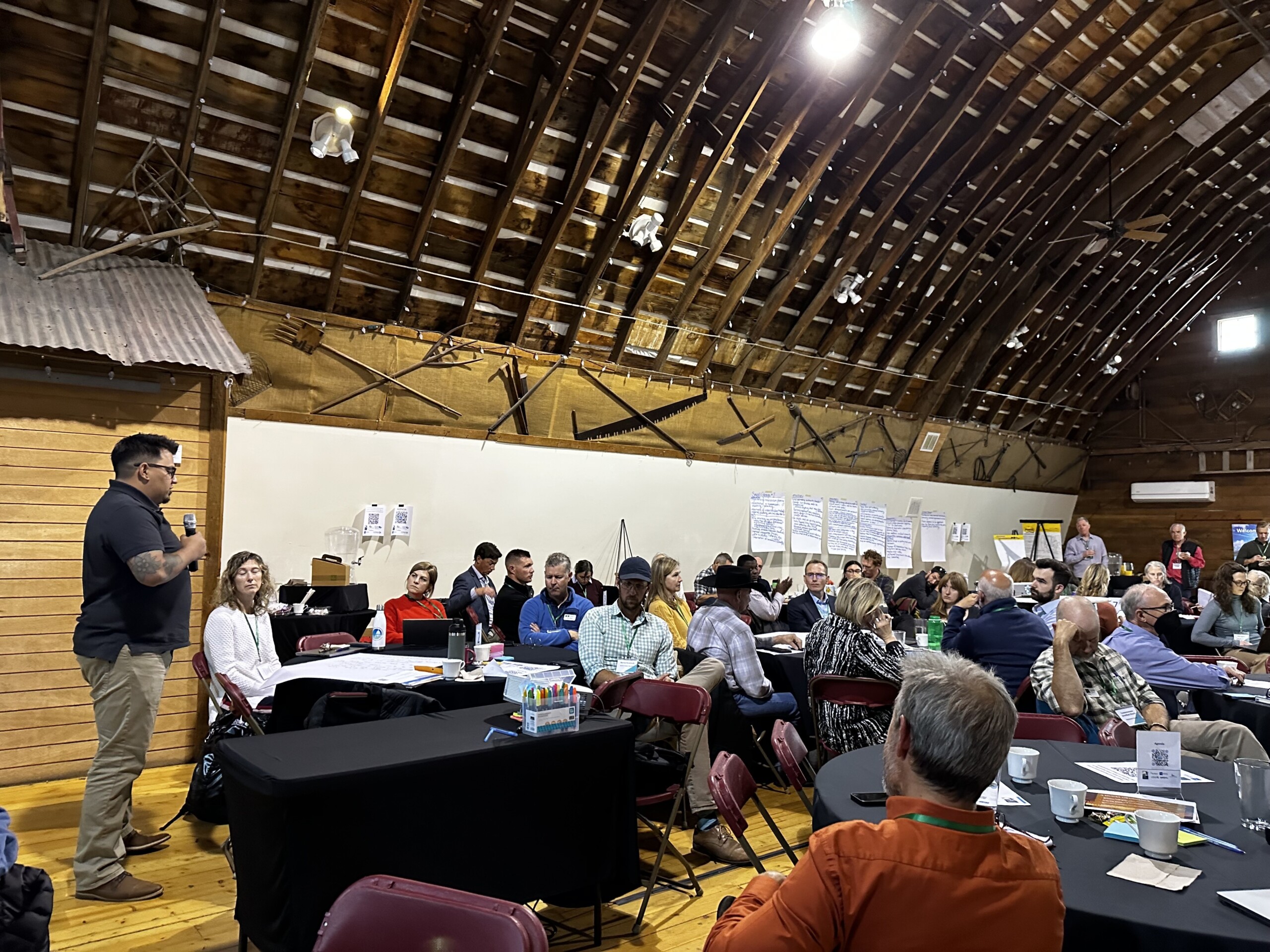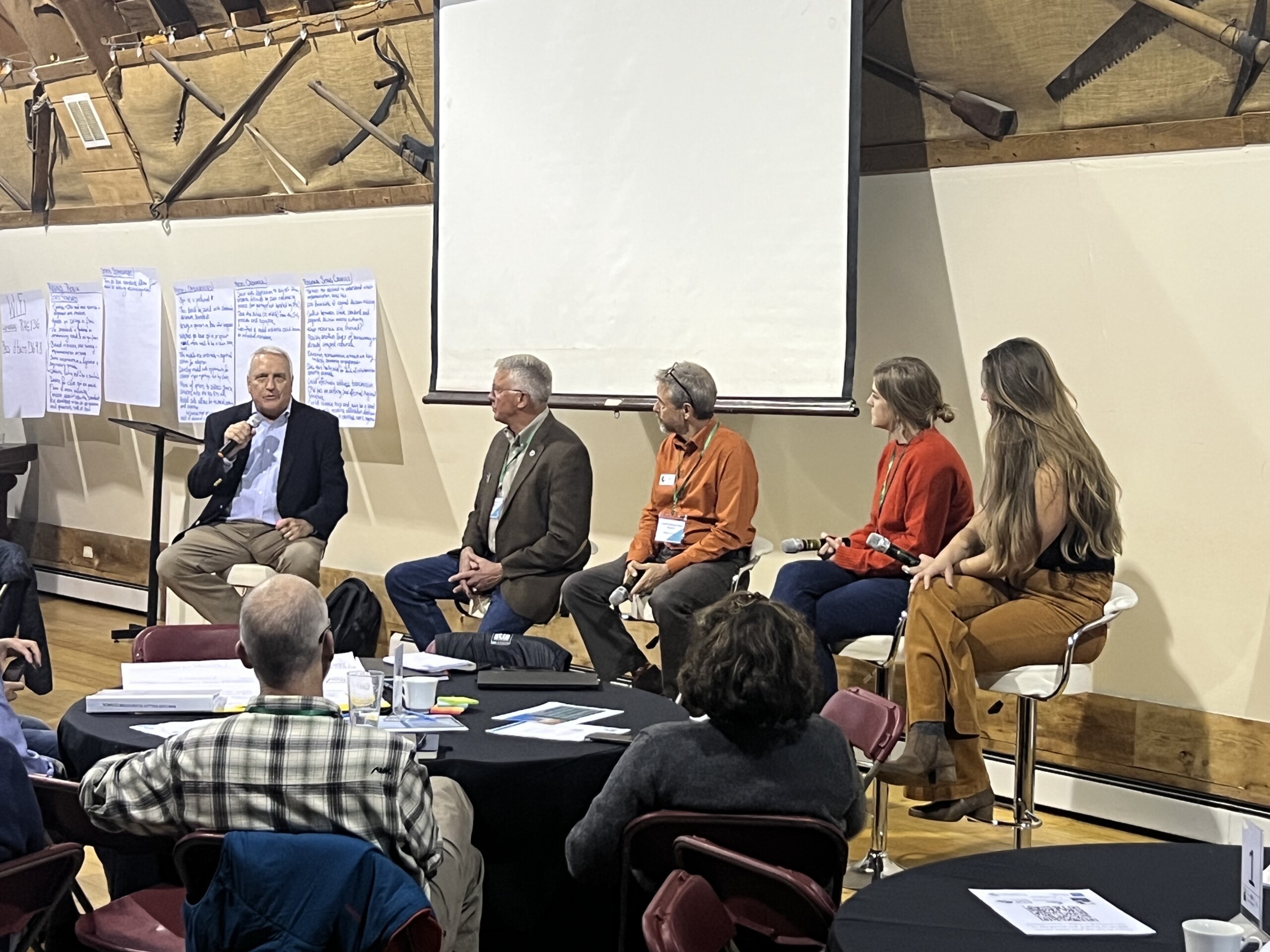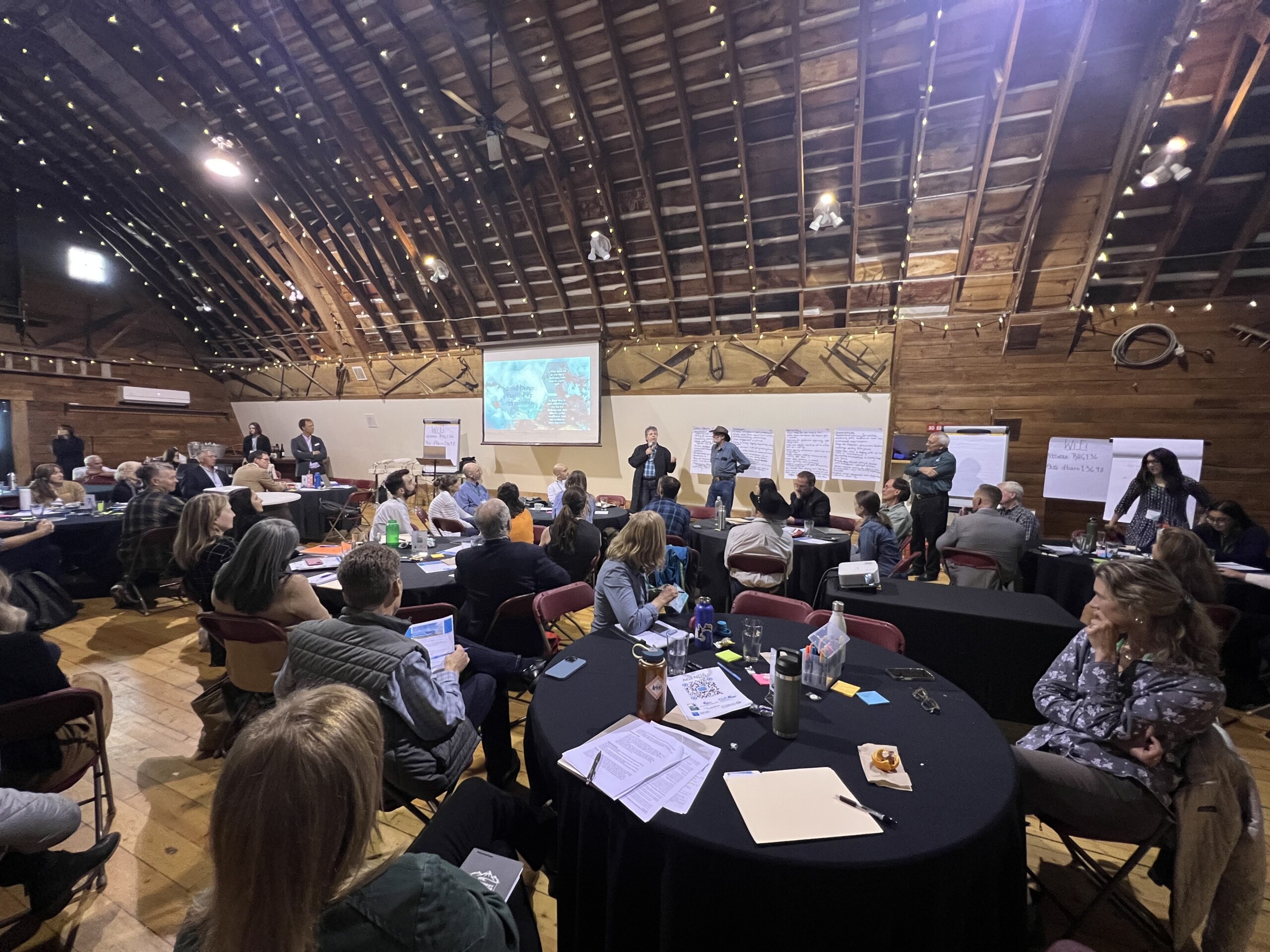December 11, 2023
As the West pushes toward its ambitious climate goals, the delicate balance between clean energy development and land conservation has become paramount. While WRA and environmental advocates have passed legislation and won commitments that put electric utilities on track to reduce emissions, advance clean cars and trucks, electrify buildings, and decarbonize gas utilities, this requires more clean energy than ever before. To be successful in meeting these goals, we must focus on the next step in this process — where to place clean energy infrastructure through smart energy siting.
As WRA’s energy siting policy advisor, I work at the critical nexus of the climate and biodiversity crises in the Interior West. I bring a unique perspective and experience to this role, too. I joined WRA as a clean energy policy fellow, working with our Clean Energy team to identify federal funding opportunities to advance climate change solutions. Now, as a part of the Western Lands team, I pull from that experience to help craft balanced policy solutions that advance WRA’s clean energy goals while ensuring the build-out of new clean energy projects does not exacerbate habitat loss or place development on important natural and working lands.
Right now, the major focus of my work is on Colorado. Building the clean energy projects necessary to meet the state of Colorado’s ambitious climate goals will require a significant amount of land for wind and solar energy production, the largest driver of new land use change in the coming decades. To meet this need in a manner that does not exacerbate habitat loss and accelerate further loss of biodiversity requires a new approach to development planning.
WRA advocates for a smart energy siting approach that not only looks at the climate benefits of new clean energy projects but also accounts for the carbon impacts of land use change, ensures that conservation values are incorporated in the location and design of a project, and directly benefits host communities.
When done thoughtfully, new clean energy projects can provide the energy we need for a prosperous economy while minimizing the impact of these large projects on wildlife and ecosystems and provide direct economic benefits, from increased tax revenue to good paying jobs, in host communities. A smart energy siting approach assesses all these factors to maximize the benefits of new development and minimize conflicts that can often slow or stall projects.
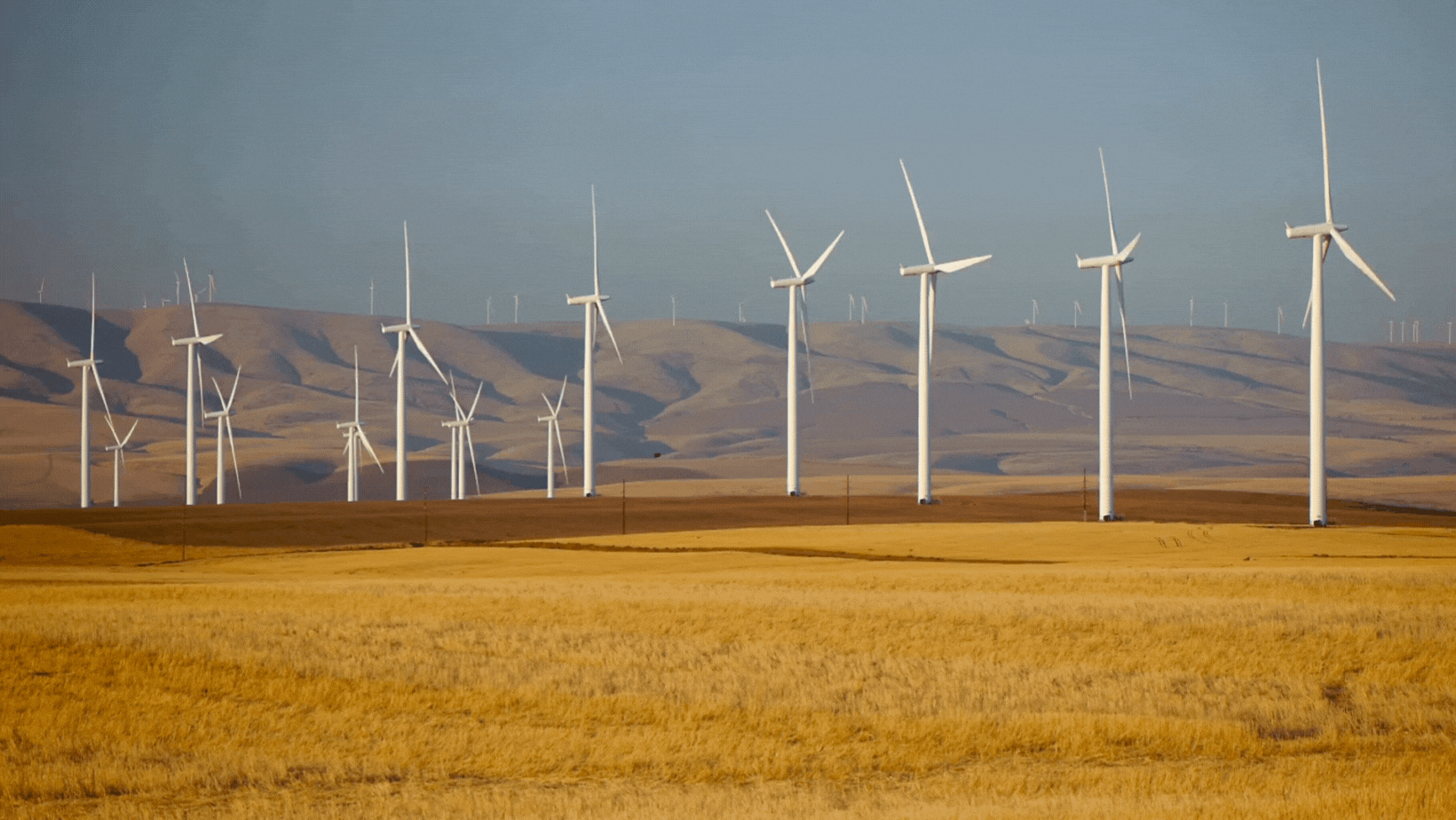
WRA, as part of the Colorado Energy Siting Coalition, has been working over the last year to develop, advocate for, and implement a siting policy framework that ensures new clean energy projects in the state follow a smart siting approach to meet the states climate and conservation goals. WRA is a founding member and has been helping to coordinate the Coalition’s efforts to understand the perspectives of stakeholders across the state that are driving, or will be impacted by, the clean energy transition. We are also providing policy research and analysis to develop a policy framework that meets Colorado’s diverse needs and considerations.
Given the state’s abundant clean energy resources, ambitious climate goals, and natural heritage, WRA believes Colorado can be a national leader in smart energy siting policy that minimizes conflicts with wildlife and accelerates the clean energy transition to address climate change. And this transition to a clean energy economy will touch all parts of the state.
To better understand the various perspectives across the state, the Coalition held several rounds of stakeholder meetings to understand and address disparate needs. This outreach and engagement process culminated in October with a Clean Energy Siting Summit that brought together over 80 stakeholders from across the state to learn from one another and co-develop policy solutions to promote smart energy siting for Colorado.
Participants included local and state government officials (county commissioners, state legislators, state agency directors and their staff, and the Governor’s policy advisors), renewable energy developers, electric utilities and co-ops, clean energy trade alliances, and environmental justice, conservation, agricultural, and wildlife organizations. This broad group, working altogether and in small groups, assessed policy options focused on:
- Balancing state and local authority;
- Providing resources to local governments;
- Integrating environmental protections;
- Facilitating public engagement and establishing and defining community benefits;
- Streamlining and expediting the permitting process.
Building on the momentum of the summit and the ideas and perspectives shared, the Coalition is working to synthesize this information and incorporate the various considerations of stakeholders into a policy framework proposal that WRA and the Coalition will advocate for during the 2024 legislative session.
The amount of wind and solar energy needed to meet Colorado’s energy needs and reduce greenhouse gas emissions in line with science-based targets will require a significant amount of land. According to recent modeling by the Colorado Energy Office, the state will need to build approximately 12.5 gigawatts of wind and 12.5 gigawatts of solar capacity over the next two decades to meet this goal. If not properly planned for, this will cause irreparable harm to Colorado’s wildlife, natural habitats, and important agricultural lands. The good news is, according to the best available science, we can achieve both our clean energy goals and protect important natural and working lands.
We only have one chance to ensure the transition to clean energy is rapid, just, and equitable – meeting the needs of communities and wildlife across the state. WRA is committed to ensuring each of these outcomes is realized in our smart energy siting policy work.
Accomplishing a just and equitable transition that occurs fast enough to address climate change is no small task. WRA and the Coalition recognize that to meet the moment – and this challenge – will require a thoughtful, smart approach to siting clean energy projects that incorporates conservation and community priorities. To do this we must ensure that all those driving or being impacted by the clean energy transition – including communities that have been previously left out of the decision-making process – are able to shape the transition and that the rights of nature and wildlife are protected.
Addressing the climate and biodiversity crises requires new, thoughtful approaches to meeting our energy needs, reducing emissions, and conserving and protecting the natural landscapes that make Colorado unique. During the upcoming legislative session, WRA will be challenging legislators to institute this critical balance into law.
